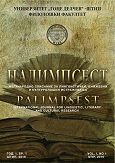DESCRIBING SPEECH ACTS FROM CROSS-CULTURAL AND INTERLANGUAGE PERSPECTIVE
Abstract
Ever since the appearance of Austin’s How to Do Things with Words (1962) and Searle’s Speech Acts (1969), speech acts have attracted great attention and have been subject to research from different perspectives. In this paper we refer to research of speech acts from cross-cultural and interlanguage perspective. First, we discuss some aspects that speech act research is based on, including: 1. variability (power of the speaker and hearer, social distance, degree of imposition, gender, etc.), and 2. communicative principles, focusing on the politeness principle which determines the type of strategy that interlocutors apply to realize speech acts. Then we refer to how culture influences speech act realization. In particular, we focus on perception of the situations in which speech acts are realized, perception of social factors, as well as the cultural understanding of face and politeness. We will also focus on the challenges that speech acts impose on learners of English as a foreign language. The above discussion is illustrated with examples from empirical research of speech acts in the Republic of Macedonia.
Keywords: cross-cultural pragmatics, interlanguage pragmatics, pragmalinguistic knowledge, sociopragmatics, speech acts.


